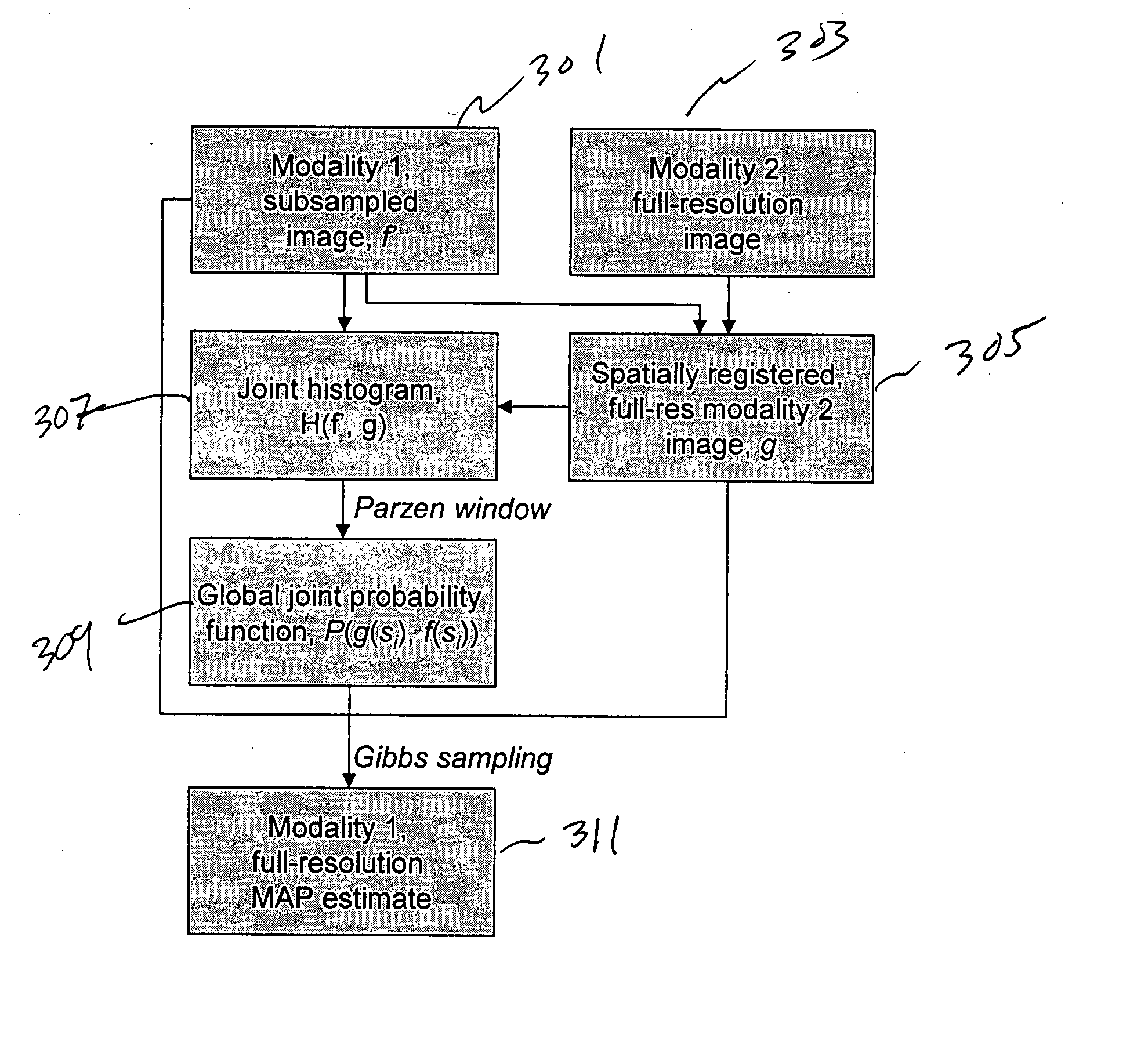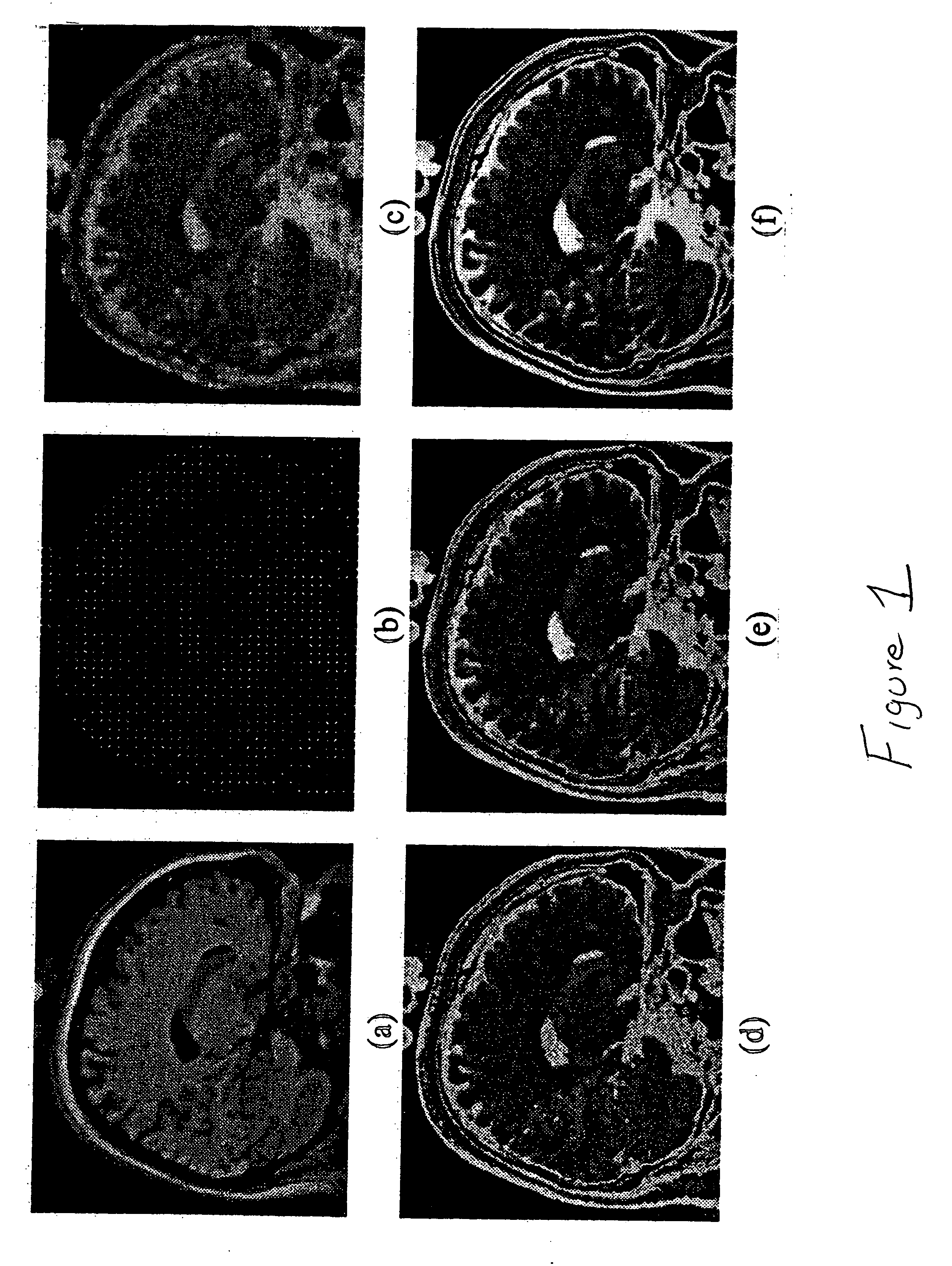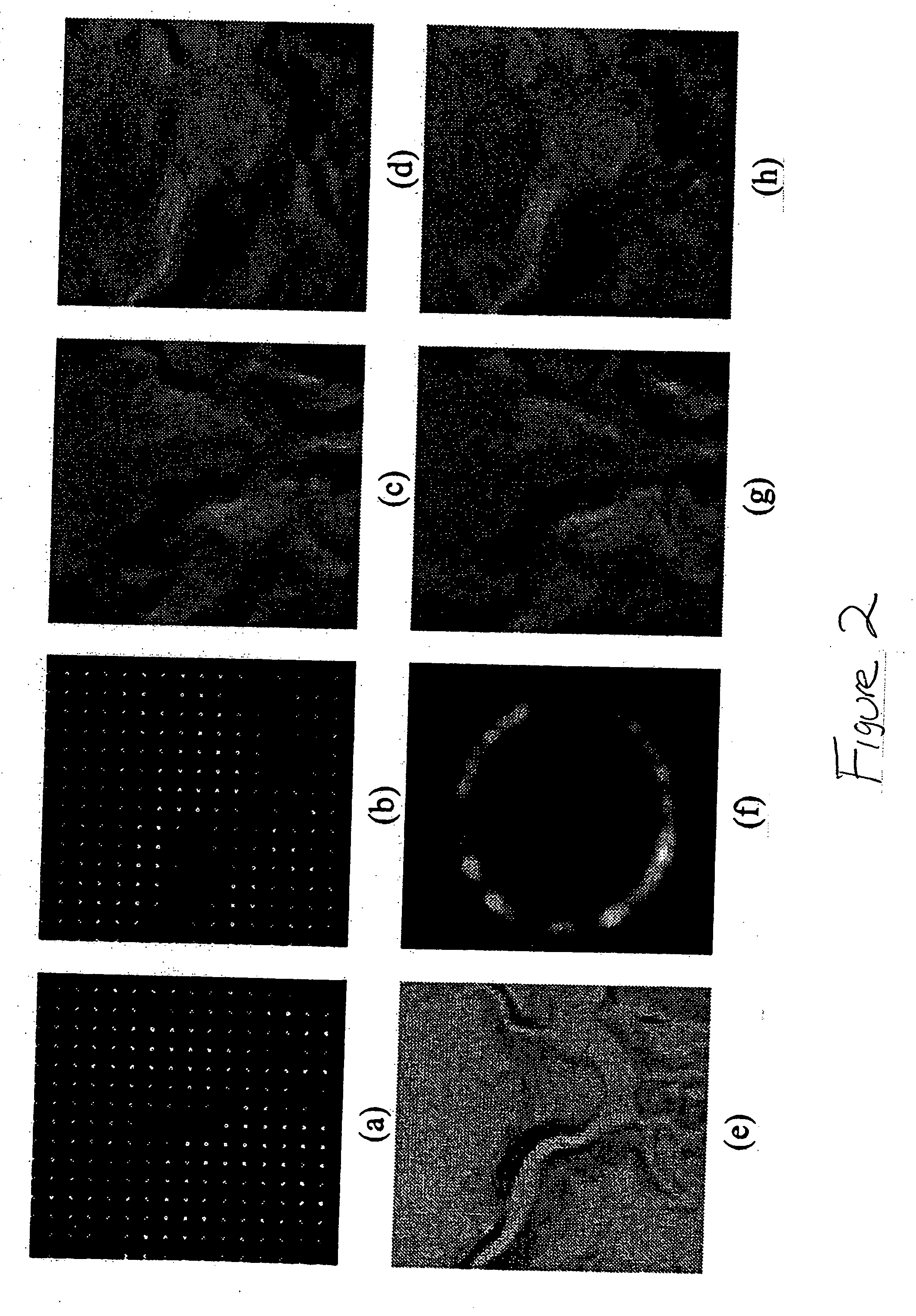Method and apparatus for propagating high resolution detail between multimodal data sets
a multi-modal data and detail technology, applied in the field of computer science, can solve problems such as enhancing resolution in processing techniques, and achieve the effects of reducing resolution, increasing resolution, and enhancing resolution of datasets
- Summary
- Abstract
- Description
- Claims
- Application Information
AI Technical Summary
Benefits of technology
Problems solved by technology
Method used
Image
Examples
Embodiment Construction
[0021] The invention concerns a method and apparatus for propagating higher-resolution detail from a dataset of one modality to a spatially registered, lower-resolution (subsampled) dataset of a second modality. A Gibbs joint posterior distribution for the missing values in the low-resolution dataset is defined, incorporating (1) an MRF (Markov Random Fields) smoothness prior and (2) likelihoods for the observed high-resolution values derived from empirical joint statistics relating the two modalities. This posterior is maximized using Gibbs sampling, producing a maximum a posteriori (MAP) estimate for the missing values.
[0022] The goal of the present invention is to improve the resolution or coverage of an existing dataset of a first modality using a more complete (e.g., higher resolution) dataset of a second modality. The technique exploits both the data that exists in the lower-quality dataset and the statistical information provided by the values in the higher-quality dataset. ...
PUM
 Login to View More
Login to View More Abstract
Description
Claims
Application Information
 Login to View More
Login to View More - R&D
- Intellectual Property
- Life Sciences
- Materials
- Tech Scout
- Unparalleled Data Quality
- Higher Quality Content
- 60% Fewer Hallucinations
Browse by: Latest US Patents, China's latest patents, Technical Efficacy Thesaurus, Application Domain, Technology Topic, Popular Technical Reports.
© 2025 PatSnap. All rights reserved.Legal|Privacy policy|Modern Slavery Act Transparency Statement|Sitemap|About US| Contact US: help@patsnap.com



